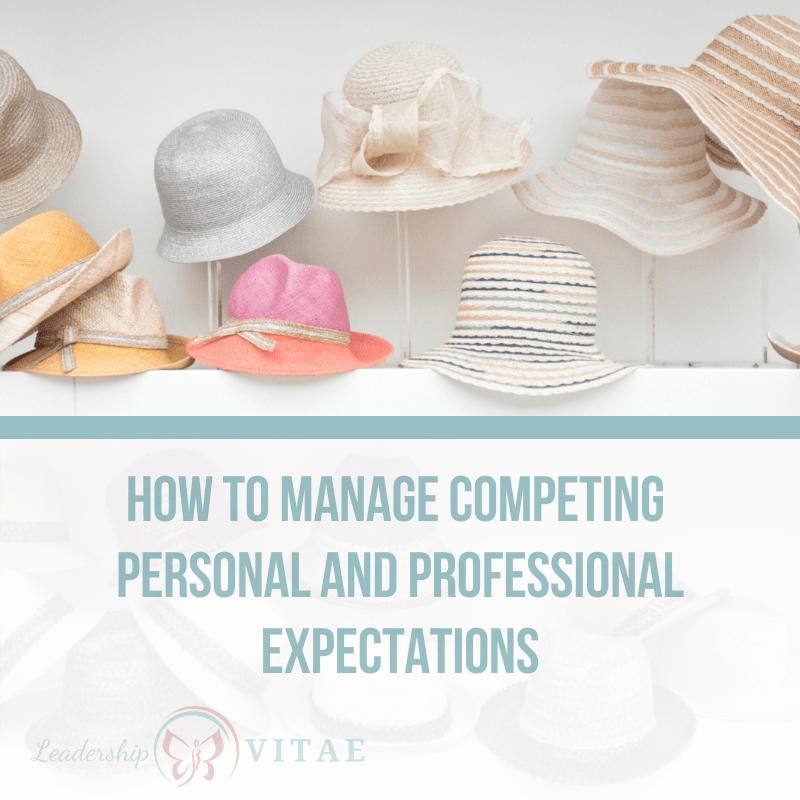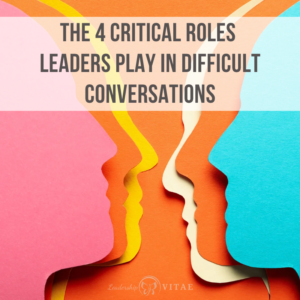
We all wear different hats. Some of us more than others, but we all have multiples roles tend to increase as our lives progress.
The roles vary but are similar. We are maybe a son or daughter, sister or a brother, mother or a father. We can be friend, neighbor, community member. A leader, team member, partner, or peer. We can be nearly all of them.
We’ve explored accountability as a component of healthy interdependence. Accountability is a sense of affecting and having ownership of our outcomes. A key element of accountability is expectations. Which may be different, depending on which role we are filling.
The expectations of my son are different than that of my manager or team. The expectations of my friends may be different, but have some commonality, to those of my co-workers.
There can be so many expectations that it can feel exhausting trying to keep up with them all! No wonder sometimes it may feel easier to put a role down for a while. Or to say, “just tell me what you want.” Because knowing and balancing the – sometimes conflicting – expectations for all of the roles we play can feel overwhelming.
What is a mother / daughter / sister / aunt / fur-mom / homeowner / friend / volunteer / neighbor / mentor / leader / employee / peer / customer to do? And where do my own expectations fit?

Clarify – List & Learn
When working with my team on accountability, the first thing we did was writing down expectations. Expectations might include specific types of work we will perform, but a lot of it was more around the how. This was a group of managers, so leadership components and behaviors were fairly dominant.
This was an exercise on work expectations, so we looked at the following categories:
- Team
- Leader
- Peer / partner
- Expectations of self
That last one is important, but often forgotten in all the roles we play. We matter too and are not just here to meet everyone else’s expectations. We have the ability, if not the right, to decide what we expect in our actions and behaviors.
When we got together as a group, we realized that – while there were certainly themes and commonality – everyone’s expectations were a bit different. There were some different levels of leaders in the room, but even those at the same level or who shared the same leader had differences.
What is also revealed is that none of us had those conversations previously. While most thought they knew what their leaders or teams expected of them, they had not had this level of deliberate conversation about it.
Before we can figure out how to balance expectations, we need clarity in what they are. Start by brainstorming and writing them down, by role. Including our expectations of our self! Consider putting them into a spreadsheet with a column per role, and expectation per row.
Next, sitting down with other party(ies) to confirm their expectations. This could be our manager, ensuring we understand their expectations of us. It’s valuable at home too. Spouses or family members each capturing their own expectations and then confirming.
Without validation of expectations, we are flying blind hoping we hit the mark.
Align – Map & Match
Once we have a list, it’s time to map and match them.
If we are wearing 50 hats, all with competing expectations, it’s difficult to keep them all straight. We can look for commonalities, however, to make it easier.
From the list, pick a role and group similar expectations, such as behaviors that are expected. Complete it for each role.
Are there similarities across roles? In my last company, treating people with dignity and respect was expected of everyone. Regardless of which hat I was wearing, that was core. As a family member and a human being, there’s a similar expectation I have of myself.
That is an example of a matched expectation. Matches mean less context shifting we have to make.
Another example is around work life balance. As a leader, I want my team to have balance, and see me demonstrating it with few late night emails or actually taking vacation. For my family, I want to live up to the expectation that I prioritize them when I’m with them (difficult during COVID when it’s all the time).
This allows for a match if I am creating that space for my team, myself and my son.
Anywhere we can find a match creates fewer competing expectations. A sense of relief that the hats we wear aren’t pulling at each other.
There will be items that don’t have a match. Things that are unique to a given role. Those are the parts that may need to context switch when we move from parent to peer or friend to leader. Or to reconsider altogether.
Adjust: Resolve & Reconsider
Once we’ve matched what we can, what’s left is what is unique to each hat we wear. The next step is to determine if there are conflicts across the lists.
For example, if my family expects me to be present with them for some portion of the evening and weekends, and work expects me to be “always on,” this is a conflict. If work expects me to be cutthroat, and I expect to be fair and forthright in my business dealings, it’s a conflict.
Seeing these conflicts in print, side by side, forces us to consider where we are willing to adjust and where we can’t. Is there an expectation of ourself or our family that we can negotiate or let go of? Maybe it’s core to who we are, or part of what makes our family tick. Then it’s time to look at the professional roles and determine options.
Are there boundaries that can be negotiated, such as with the always on culture? Is direct, assertive, fair and forthright an okay alternative to cutthroat?
Conflicts either need to be resolved, or reconsidered. We can negotiate expectations or compromise where we are able. Ultimately, to retain a sense of accountability, we have to get to a place where we can have a sense of ownership of outcomes. Of our ability to meet those expectations.
Know what matters most
We all wear many hats, but they are not created equal. Knowing our priorities helps influence where we can compromise, create boundaries, or renegotiate expectations.
In some cases, the expectations are so different, it comes to an impasse. For example, the expectations my ex-husband and I each had of what it means to be a member of a family and a parent were way off.
For me, the expectations I had of myself as a mother and partner, and the needs of my son, were higher priorities than that of my spouse. When we could not resolve the conflicts, we decided to part ways. Not easy, but easier than trying to live with constant disconnect between what we each expected of ourselves and the other.
It is the interactions we have in life that create its depth and richness. These may be “hats we wear” or “roles we play” but they represent relationships. Stepping back and looking at them logically can help, but there is emotion here too. Potentially unreasonable expectations we put on ourselves to be perfect in all the ways we show up.
It helps to know these expectations, align what we can, reconsider what we can’t, and ultimately prioritize what’s most important. Maybe sprinkle in a little grace when we struggle shifting or have to put one down for a while. Particularly now, when additional roles of caregiver and teacher are often thrown in.
How do you balance competing expectations in work and life? Please add your experiences in the comments. Also, consider sharing this with someone you think could benefit.








